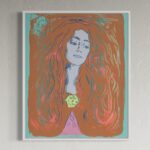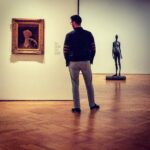“The difference between false memories and true ones is the same as for jewels: it is always the false ones that look the most real, the most brilliant.“
~Salvador Dali
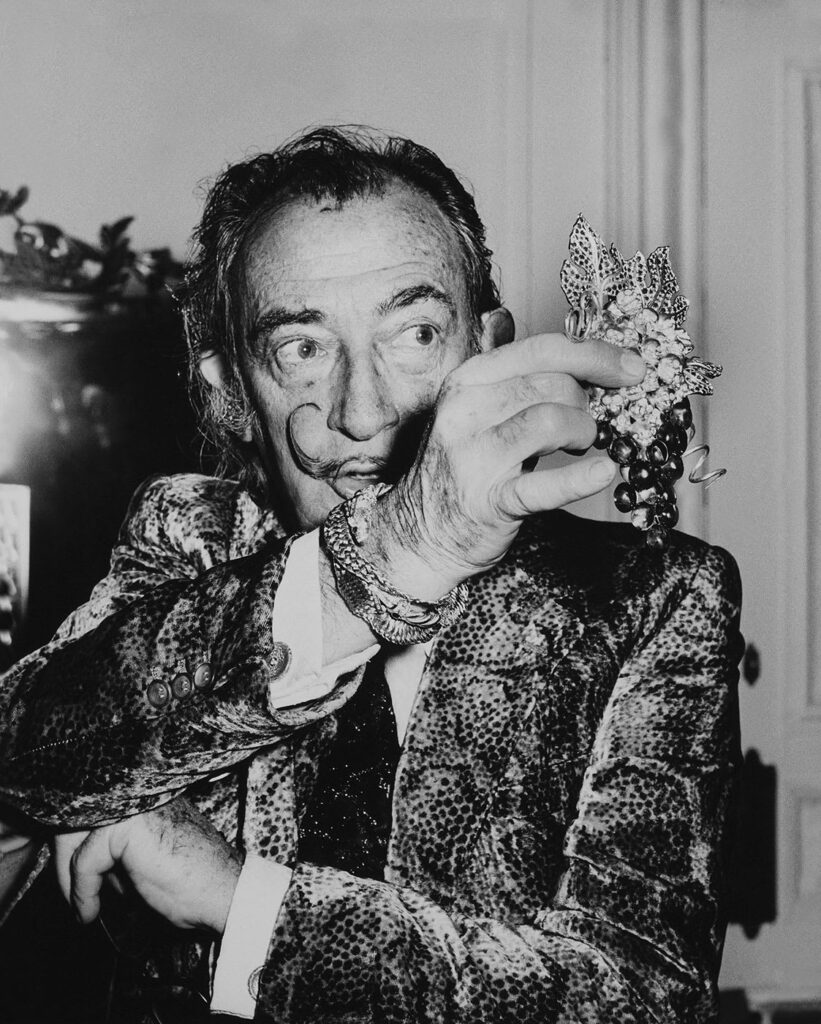
By Reed V. Horth and Kat Barrow-Horth, for Robin Rile Fine Art
in 1941, a pivotal year for Dalí. The Surrealist master, forever drawn to the intersection of art and science, teamed up with the renowned jewelry designer Duke Fulco di Verdura. Their collaboration birthed five iconic pieces that would set the stage for a series of surreal jewels that would captivate collectors and art enthusiasts for decades. Dalí’s designs, which often incorporated miniature paintings, were paired with Verdura’s masterful craftsmanship to create pieces unlike anything seen before. The initial designs debuted at the Julien Levy Gallery in New York, before moving to a landmark exhibition at the Museum of Modern Art (MoMA), alongside works by fellow Spanish artist Joan Miró.
Dalí’s fascination with the symbolic power of jewelry was part of his broader exploration of identity, nature, and the human experience. As he once stated, “To history, they will prove that objects of pure beauty, without utility but executed marvelously, were appreciated in a time when the primary emphasis appeared to be upon the utilitarian and the material.” For Dalí, jewelry wasn’t just a form of adornment; it was a statement about the blending of the fantastical and the real.




Dalí didn’t stop with Verdura. Throughout the 1950s, he partnered with Argentinian designer Carlos Alemany, whose mastery in handling precious metals and stones allowed Dalí to bring his visions to life in a more refined and elaborate fashion. Together, they crafted one-of-a-kind pieces made from gold, platinum, diamonds, sapphires, emeralds, coral, and more. The jewels took on forms that felt alive—fluttering angel wings, a beating ruby heart, a flower whose petals opened and closed—evoking Dalí’s surrealist approach to art. Each piece was a miniature sculpture, a movement captured in precious gems and metals.


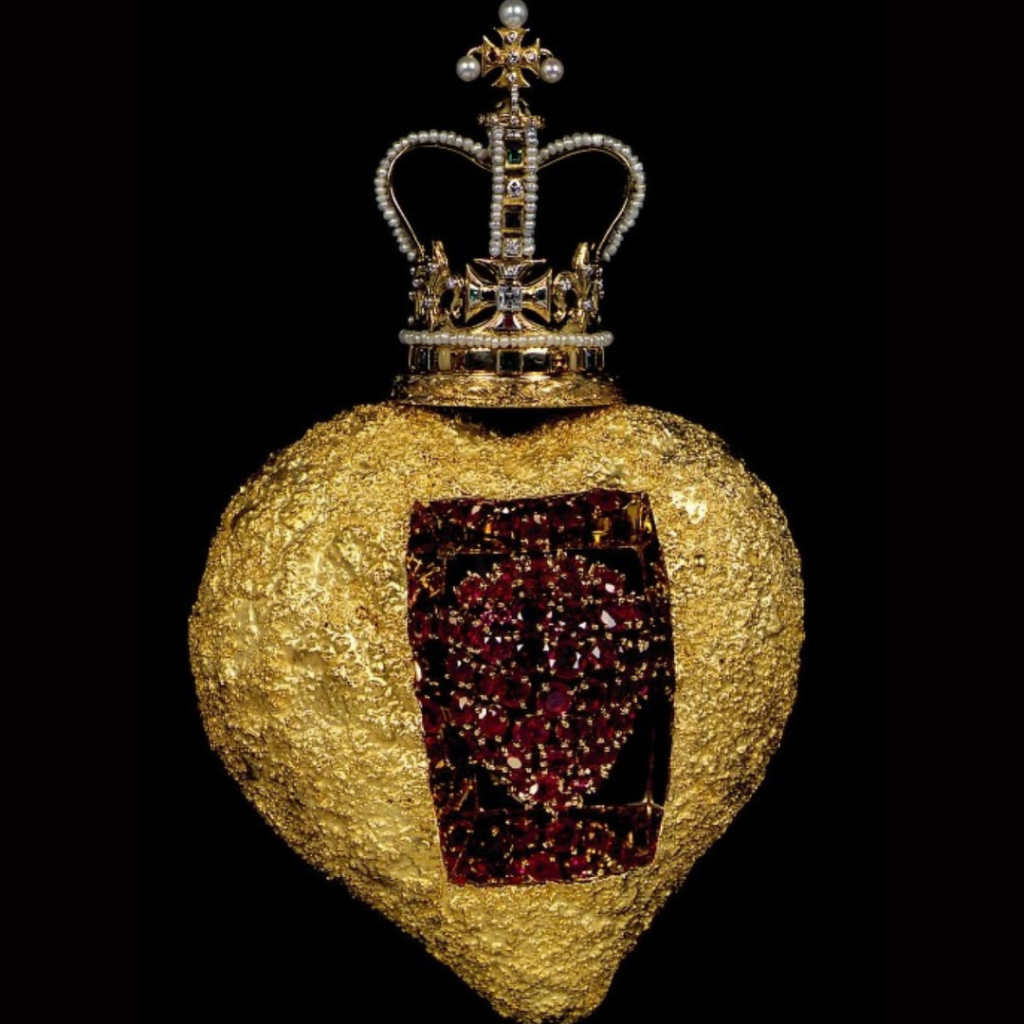
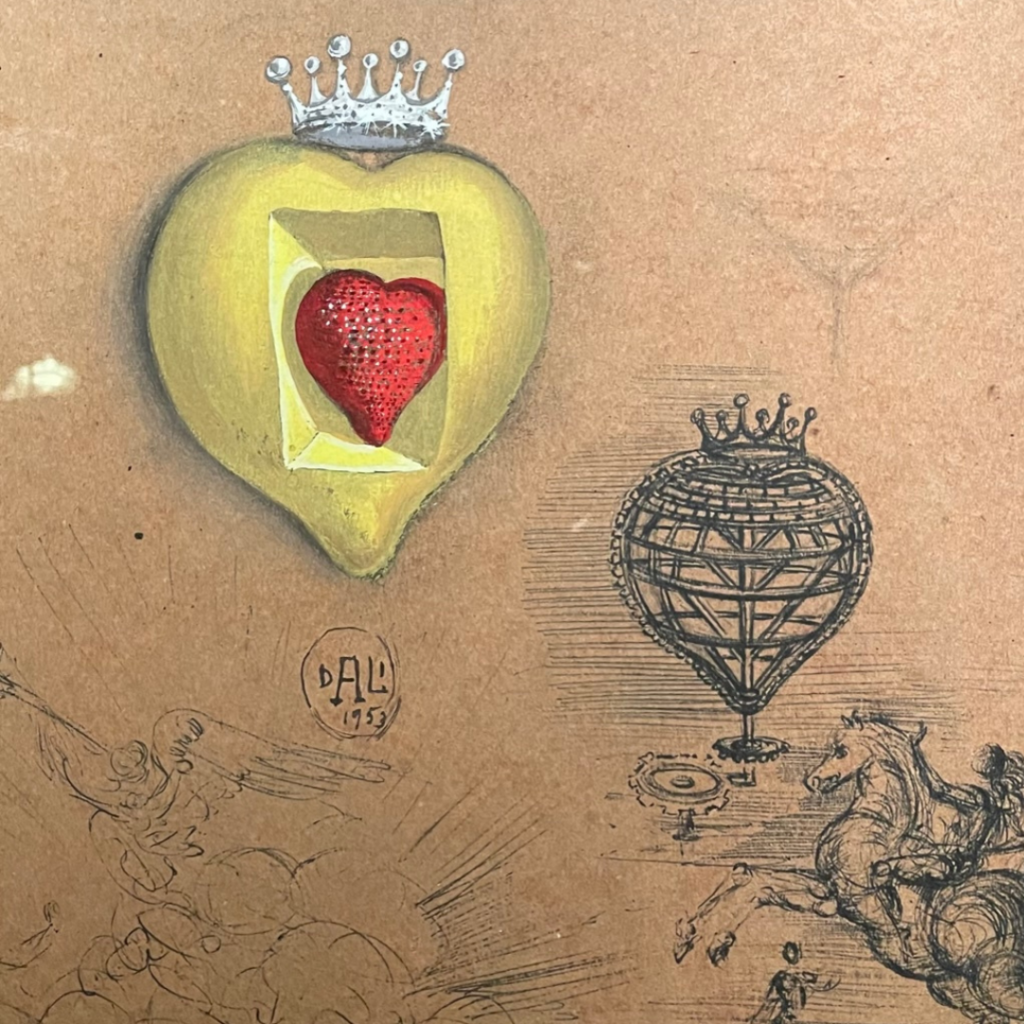
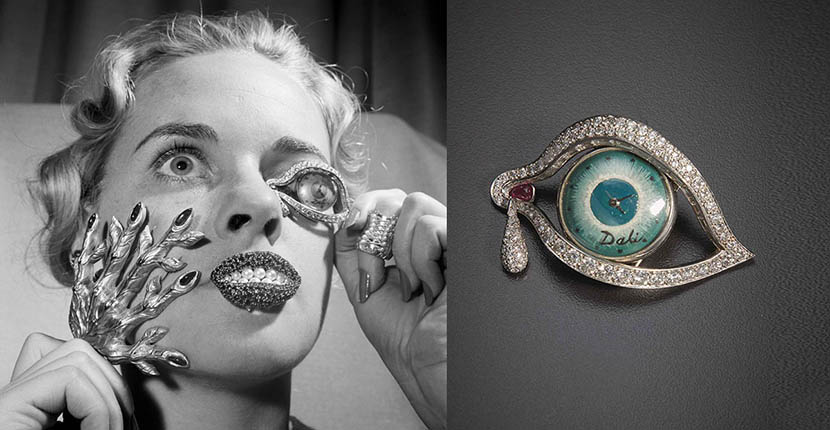
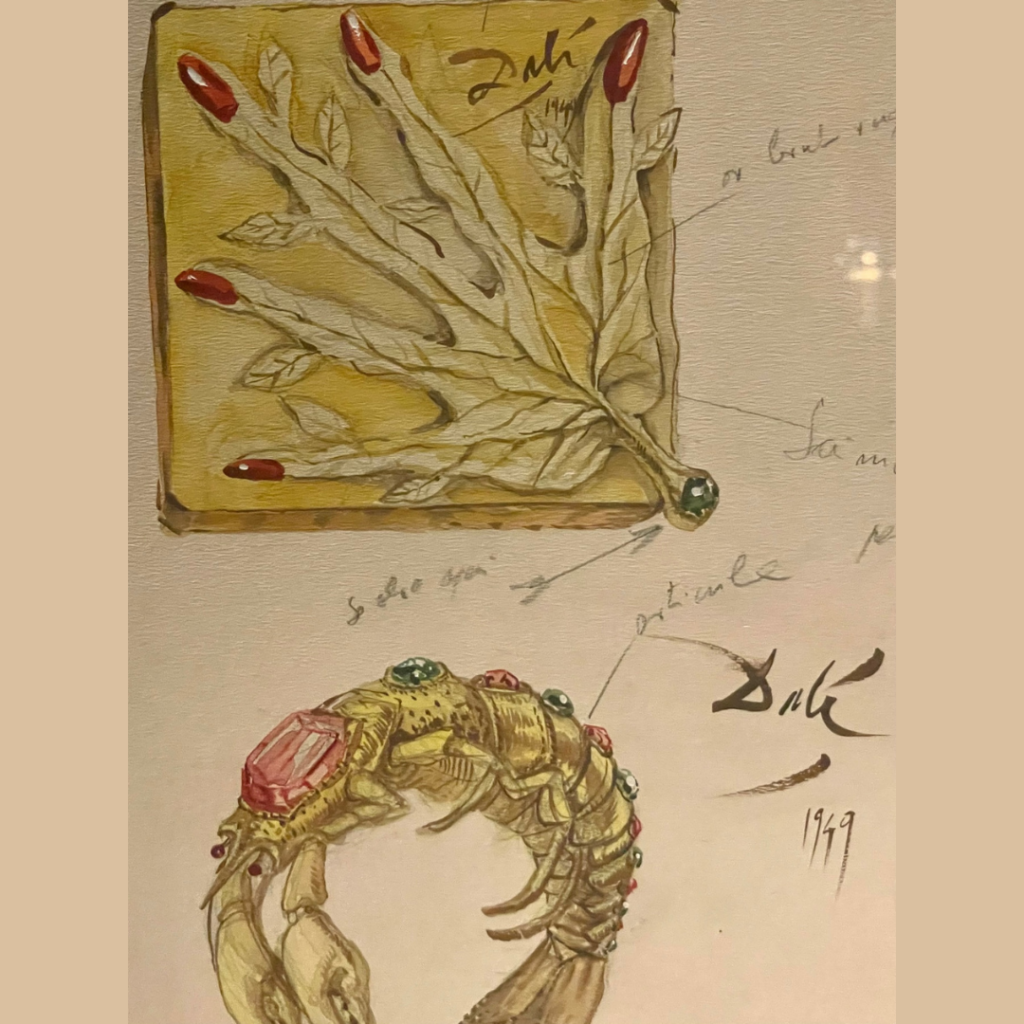
One of the most striking pieces in the collection is the “Apollo and Daphne” brooch. Dalí’s drawing of the Greek mythological characters is set within a beautifully detailed gold Palladian door, complete with a ruby and turquoise pediment that frames the drawing as if it were a window into another world. It’s a perfect example of Dalí’s ability to fuse classical mythology with the vibrant energy of his own imagination.

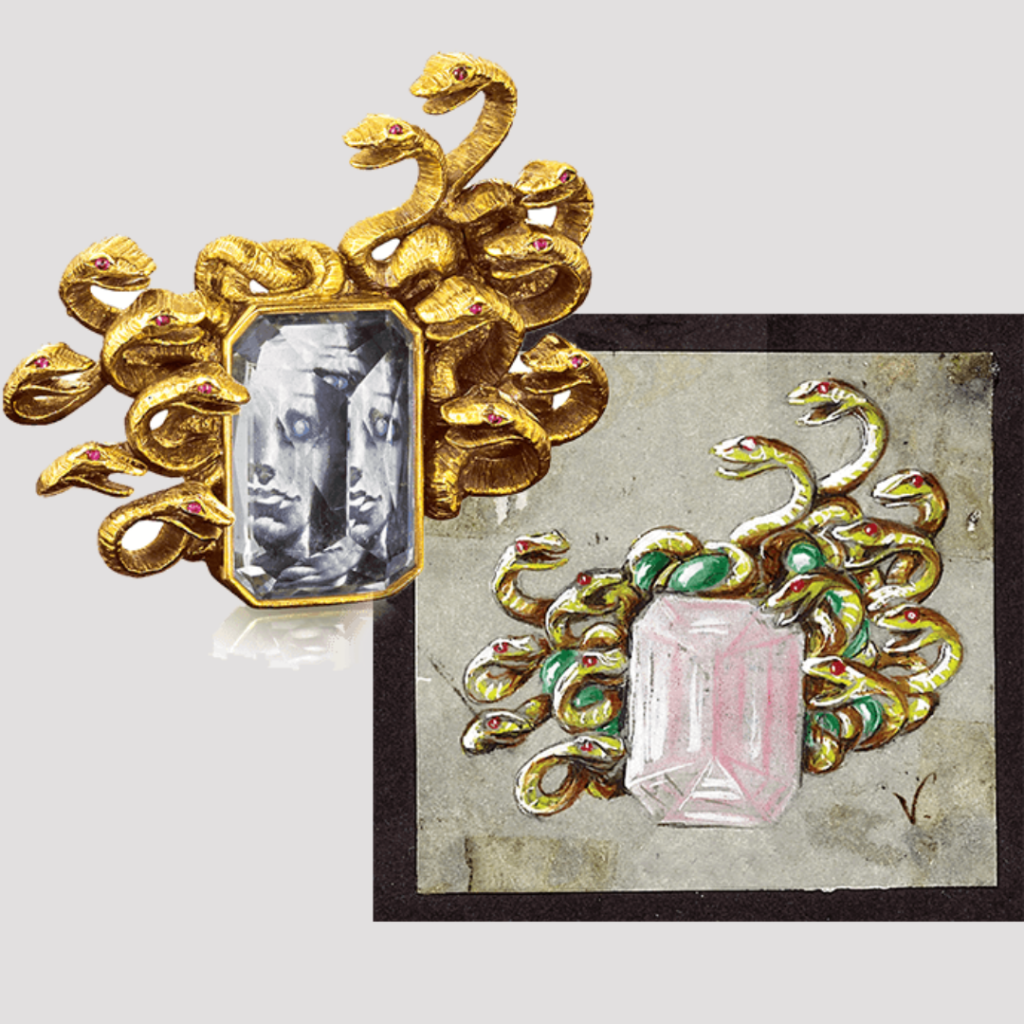

In 1958, a major collector and philanthropist, Owen Cheatham, acquired a large portion of Dalí’s jewelry and drawings, which he later exhibited for various charitable causes. These jewels would go on to become part of a prestigious collection housed at the Teatro-Museo Dalí. In 1999, the museum made a major acquisition of Cheatham’s collection for a reported 5 million euros, solidifying these surreal jewels as part of Dalí’s lasting legacy.
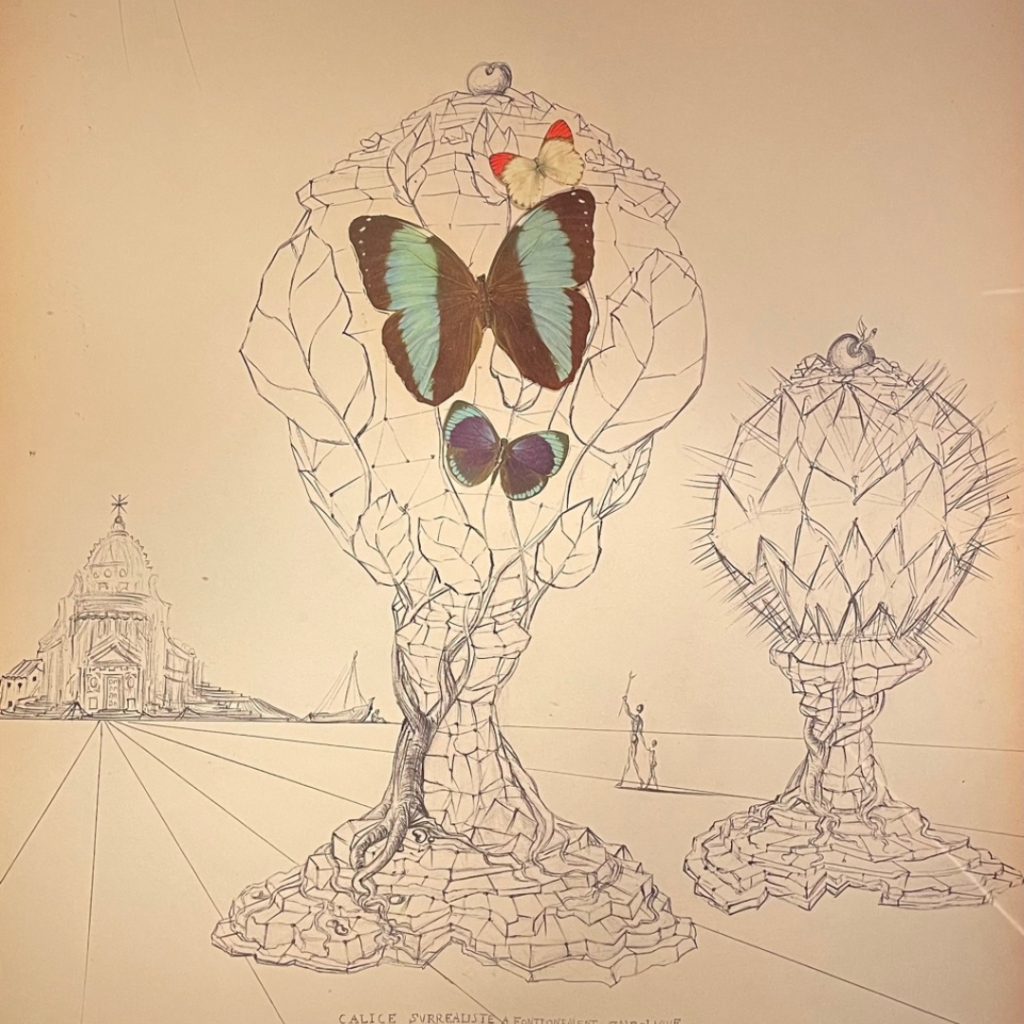


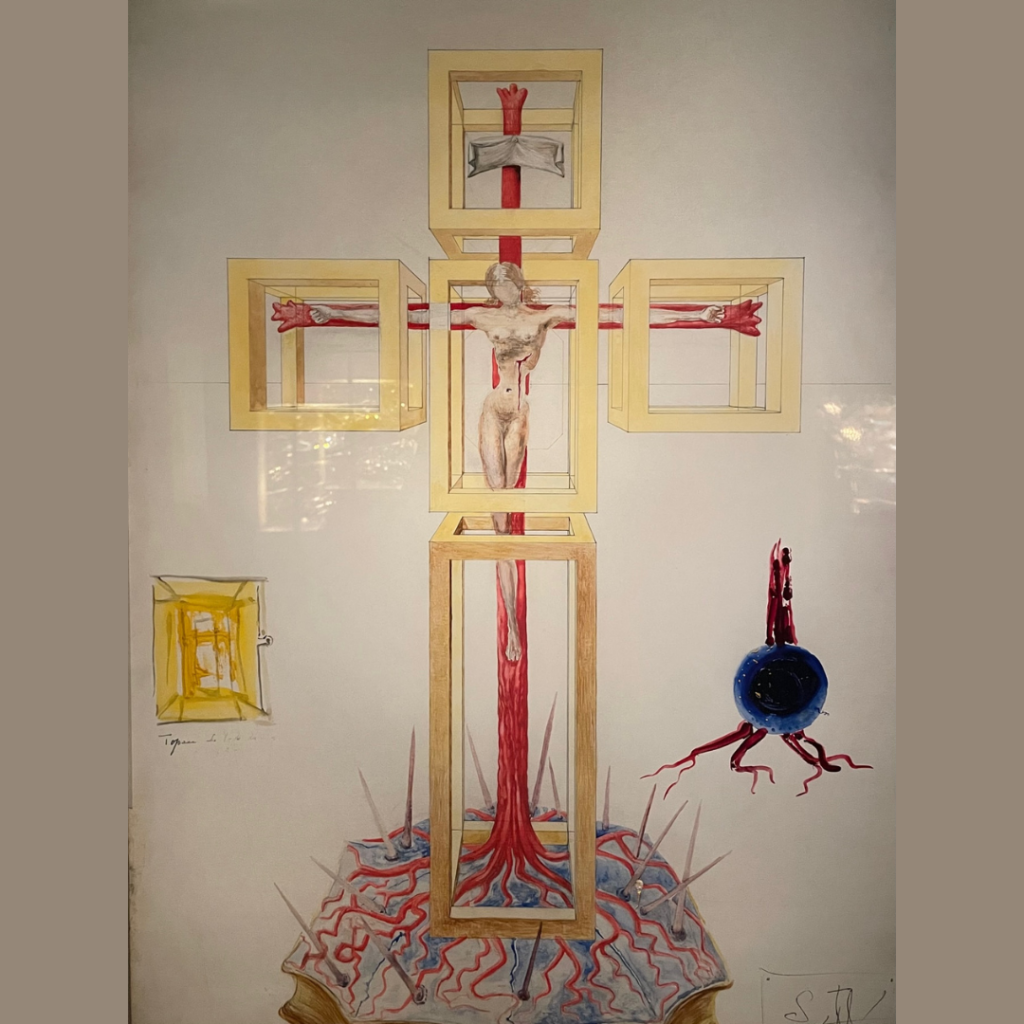
Today, these extraordinary pieces, ranging from crucifixes and brooches to animal-shaped necklaces and jeweled sculptures, glisten within the darkened halls of a dedicated wing in the museum. Their intricate designs, twinkling beneath the museum’s soft lighting, bring to life Dalí’s vision of art as an immersive experience. The jewels are more than just accessories—they are an exploration of spirituality, human nature, and the mysteries of the subconscious.
What makes these jewels truly Dalinian is their ability to make the ordinary extraordinary. You won’t find necklaces or rings that merely hang lifelessly around a neck; these are jewels that possess a kind of magic, capturing the viewer’s attention with their intricate design and surreal function. Dalí’s use of motion and mechanics within his jewelry not only challenges our understanding of the form but also invites us into his world, where art, life, and the fantastical converge.
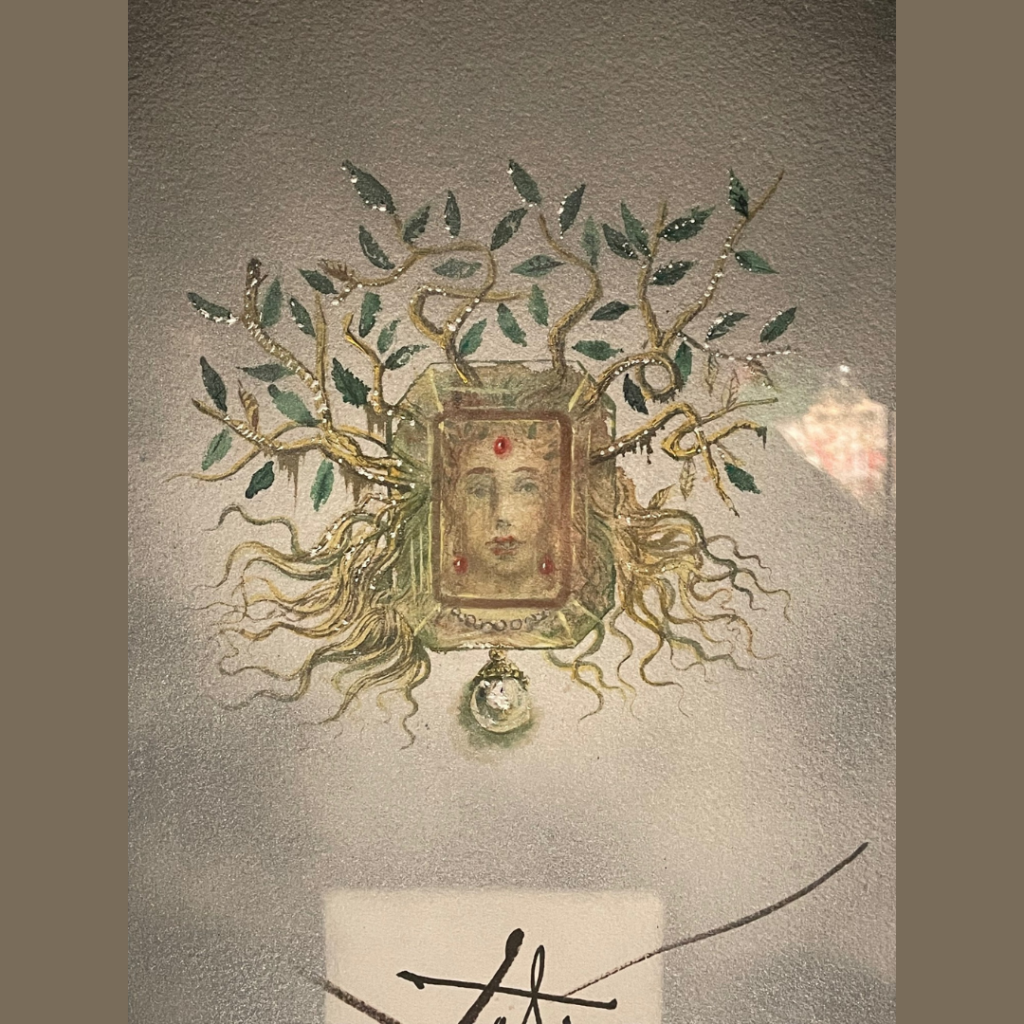

As you wander through the museum, the jewels seem to sparkle with stories waiting to be discovered. Whether it’s the story of Dalí’s collaboration with Verdura or the intricate symbolism behind each piece, they offer a glimpse into the mind of one of the 20th century’s most innovative artists. So, if you find yourself in Figueras, Spain, be sure to stop by the Teatro-Museo Dalí to experience these mesmerizing treasures—an unforgettable part of Dalí’s artistic journey that continues to shine brightly.

